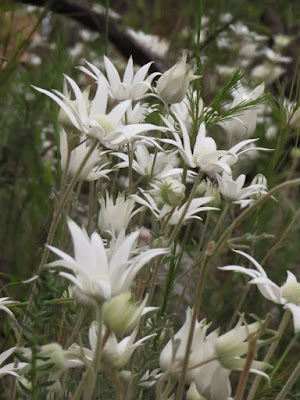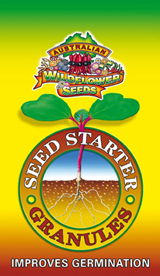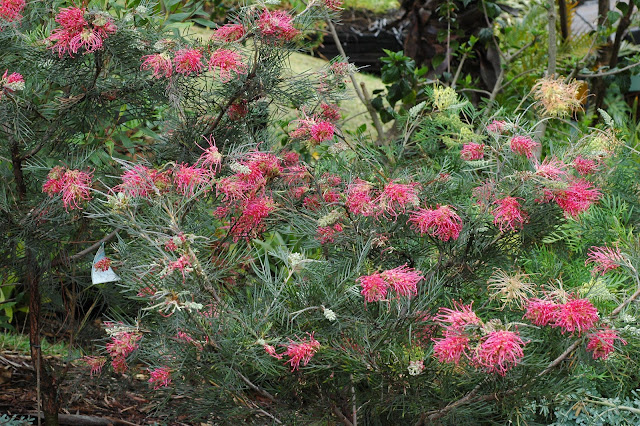PLANT DOCTOR
Germinating Native Seed
Australian plants have evolved over thousands of years to respond to a variety of climatic extremes, from fires, to droughts to floods as well as being grazed by native animals.
 |
| Wattle seeds need boiling water treatment |
Such a long, long time for plants to evolve as well as being isolated from the rest of the world has meant that a high diversity of flora abounds, so that it would be unusual to think that everything grows the same way.
Australian plants have developed various adaptations so that the seeds of which can grow in the most suitable environment for that species of plant to survive.
A suitable environment often means seeds don't germinate until a bushfire removes competing plants giving the seeds more access to sunlight and nutrients.
Then they only have a short window to germinate.
The hard seed coat is therefore a protective layer that allows the seed to stay dormant for great lengths of time, even years before germination.
So how do plants keep germinating and what tricks have native seeds to keep them alive until conditions are right?
There are specific requirements for some seeds and in fact a wide range of native seeds require you, the gardener to break their dormancy before they germinate. Some are more difficult than others.
So what are some of the treatments to break native seed dormancy?
Boiling water or hot water treatment is recommended for hard-coated seeds such as Acacia (wattle)and Hardenbergia species . This involves boiling some water and waiting for a minute so it's just off the boil, then soaking the seeds for a few to eight hours. The time varies depending on the seed.
Smoke chemical treatment or smoke treatment to break the dormancy of native seeds.
Wildflower seed starter granules or similar, are vermiculite or another bio material that contains the smoke chemicals from the burning of bush materials.
The way you use it is to sprinkle some on top of the potting mix after sowing the seeds, and on the first watering, the smoke chemicals are released over the seeds.
You can also put some of these seed starter granules in the soaking water of the seeds in the hot water treatment method.
 |
| Flannel flowers |
Not all seeds need smoke chemical treatment, but there's a few that benefit from using it, in fact are difficult to germinate without it. - Sturt Desert peas comes to mind, also Dianella, Philotheca, Xanthorrhoea, Actinotus, Callistemon and Banksia.
As a general rule, sowing and smoking should be done when you would expect the seeds to germinate in nature.
Both these methods basically speeds up what often takes months or even years in nature to get seeds to germinate.
TIP: Be aware of the germination temperature that seeds need to germinate.
But what other tricks are there?
Steve talks about germinating Davidson plum seeds using the hot water treatment in the podcast.
So let’s find out more.
PLAY: Germinating native seeds pt 2_20th May 2022
I'm talking with Steve McGrane, horticulturist and agriculturist.
I hope that’s given you some idea about perhaps why some of the native seeds are more difficult to germinate than regular seeds.
In fact not everything germinates the same way, and here lies the problem.
That’s why a bit of research into the seed type you’re trying to germinate goes a long way.
If you have any questions you can email us
Realworldgardener@gmail.com or write in to 2rrr, PO Box 644 Gladesville NSW 1675.









